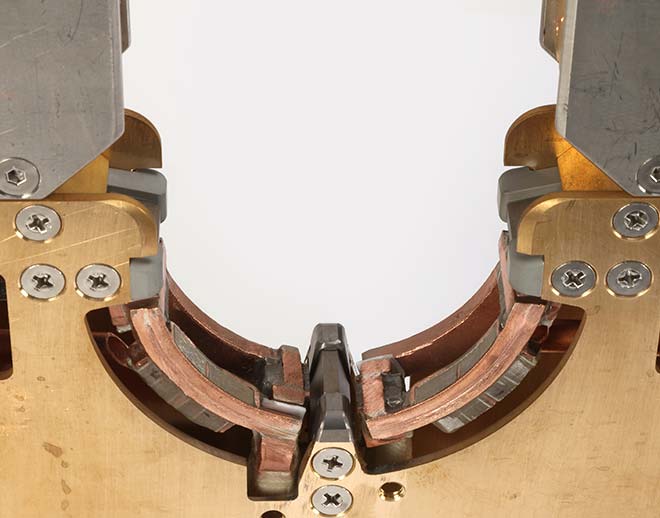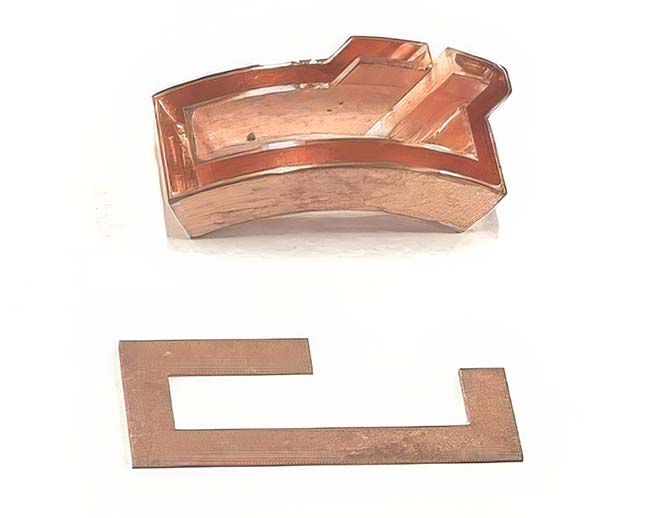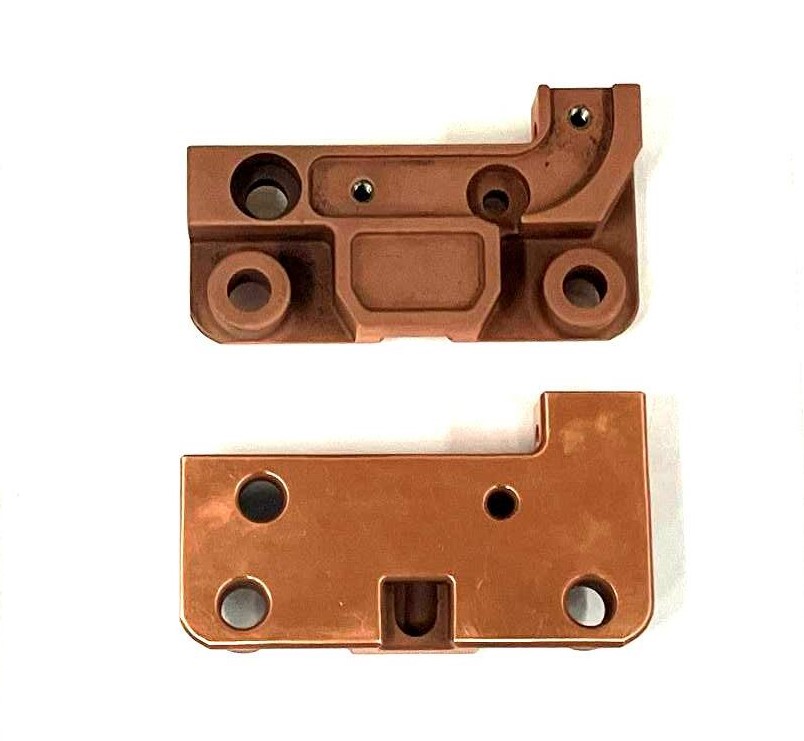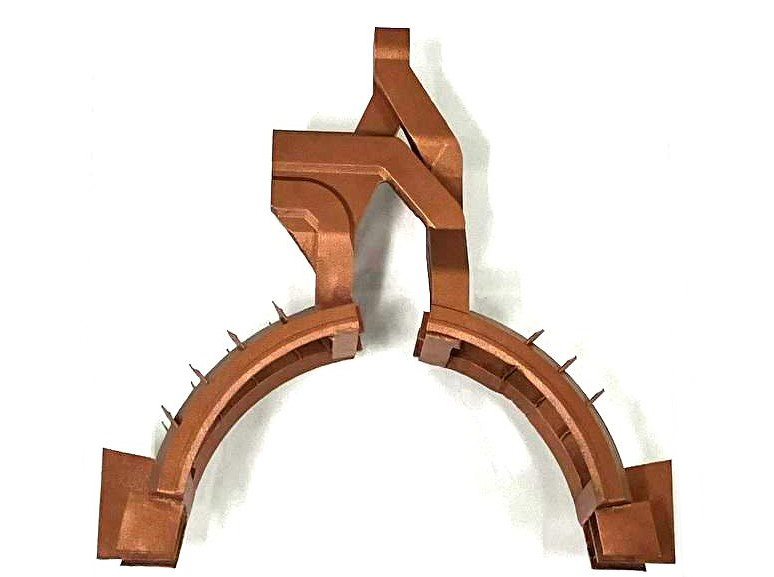Crank Shaft IH Coil Technologies
Fuji-Denshi Induction Coil Manufacturing Philosophy.
Our philosophy is to design the optimal inductor shape based on the customer’s required quench-hardening quality and expected hardening conditions. Each copper part is produced using the most suitable manufacturing method, then assembled into a single inductor. Rather than shifting from hand-made to 3D-printed inductors, FD has adopted each method in chronological order to improve performance and reliability.
Hand-Made Copper Components

The hand-made method of coil building relies on bending copper pipes by hand, a process that emphasizes craftsmanship and experience.
- Hand-made coil building involves bending copper pipes by hand.
- Coils are shaped with precision to meet hardening requirements.
- Advantages: time and cost savings for simpler designs.
- Limitation: challenging for complex shapes, requiring expertise and patience for consistency.
Machining Copper Components
Machining coils uses advanced technology to create induction coil parts greater precision and complexity than hand-made coils.
- Enables intricate shapes and exact tolerances for consistent results.
- Offers high flexibility, accuracy, and performance.
- Drawback: more time- and cost-intensive than hand fabrication.
- Best for parts where complexity and reliability are priorities over speed.

Lost-Wax Copper Components

Lost-wax casting produces precise, intricate copper parts with minimal waste.
- Reduces excessive machining and lowers production costs.
- Combines traditional craftsmanship with strict process control.
- Skilled technicians ensure accuracy from wax model to final casting.
- Limitations: long lead time and low flexibility.
- Less suited for rapid design changes or custom adjustments.
3D Printed Copper Components
Additive manufacturing uses 3D printing for precise copper parts with minimal labor.
- Shorter lead times compared to lost-wax casting.
- Eliminates vulnerable areas (e.g., brazed joints) for greater durability and reliability.
- Skilled operators and advanced equipment ensure consistent quality.
- Drawback: high raw material costs.
- Less cost-effective for large-volume production.



